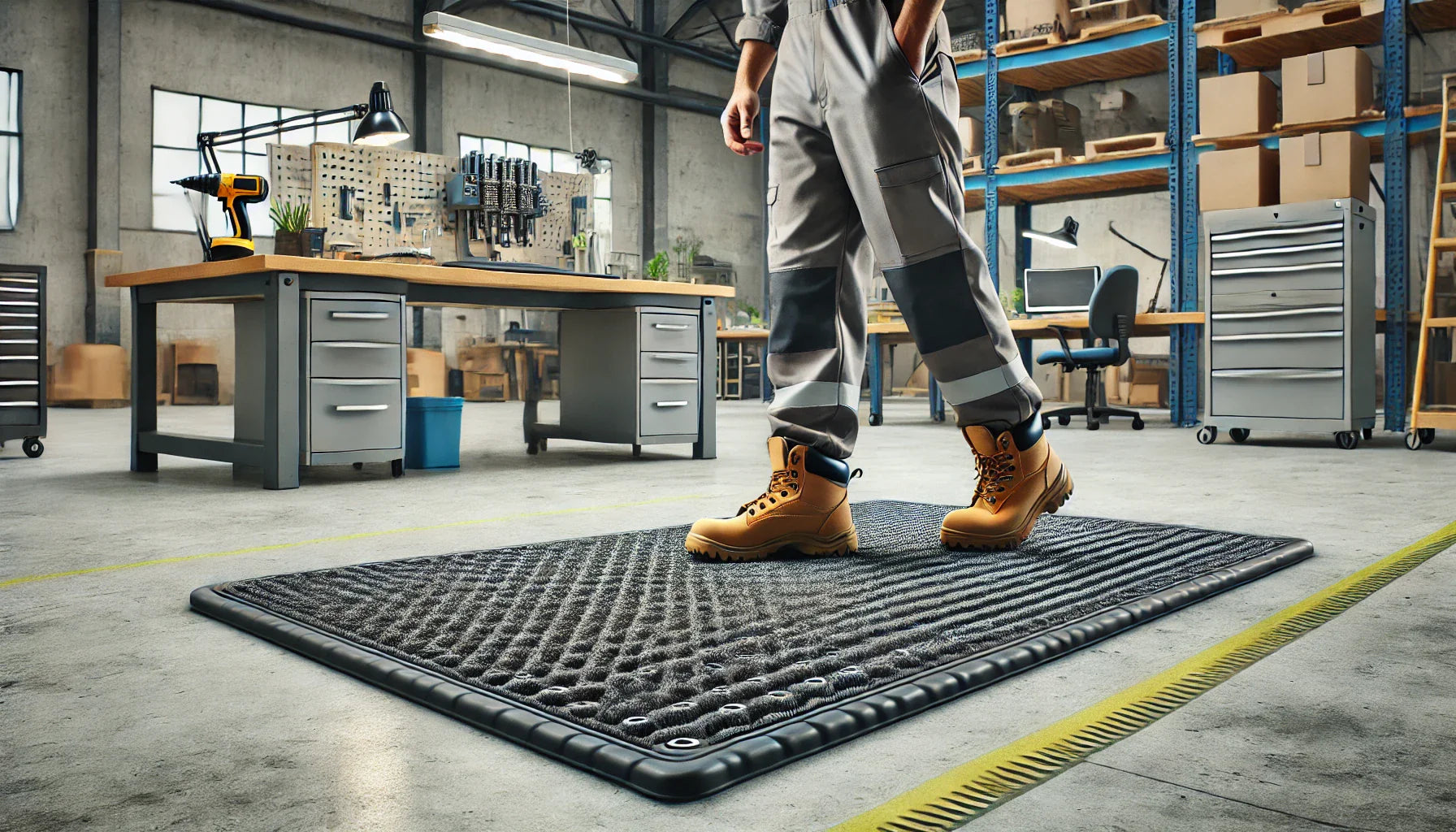Introduction
Standing for long hours might seem like a minor inconvenience, but science tells us otherwise. Whether you’re working in a kitchen, behind a counter, or on a production line, prolonged standing takes a toll on your body. That’s where anti-fatigue mats come into play. These mats are not just fancy rugs; they are scientifically engineered to combat fatigue and improve workplace ergonomics. But how do they actually work? Let’s dive into the mechanics behind anti-fatigue mats and why they should be a staple in every workspace.
Understanding Fatigue and Its Impact on the Body
How Prolonged Standing Affects the Body
Standing for long periods puts excessive pressure on your muscles and joints. Unlike walking, where motion allows for blood circulation, standing still can restrict blood flow, leading to muscle fatigue and discomfort.
Common Health Issues Caused by Standing for Long Periods
-
Lower back pain – Excess strain on the lumbar spine can lead to chronic discomfort.
-
Leg and foot fatigue – Continuous pressure can cause swelling and soreness.
-
Circulatory issues – Standing still for too long can lead to varicose veins and blood pooling in the legs.
The Mechanics of Anti-Fatigue Mats
The Role of Cushioning and Shock Absorption
Anti-fatigue mats work by providing a cushioned surface that absorbs impact and distributes pressure more evenly. Unlike hard floors, these mats reduce strain on the feet and lower limbs.
How Anti-Fatigue Mats Encourage Micro-Movements
One of the most overlooked benefits of anti-fatigue mats is their ability to promote subtle movements. The mat’s slight instability forces users to make micro-adjustments in their posture, which helps with blood circulation and muscle engagement.
Key Features of High-Quality Anti-Fatigue Mats
Material Composition: Foam, Rubber, and Gel-Based Mats
The material of an anti-fatigue mat determines its effectiveness. The most common types include:
-
Foam mats – Lightweight and comfortable, but less durable.
-
Rubber mats – Highly durable and resistant to wear and tear.
-
Gel-based mats – Offer a balance between cushioning and support.
Surface Texture and Slip Resistance
A high-quality anti-fatigue mat should have a non-slip surface to ensure stability. Some mats feature textured patterns that enhance grip, making them ideal for workplaces with spills or high foot traffic.
Thickness and Density: Finding the Perfect Balance
Mats that are too soft can be ineffective, while those that are too hard may not provide enough cushioning. The ideal thickness typically ranges between ¾ inch to 1 inch, ensuring optimal support and comfort.
Scientific Studies Supporting the Benefits of Anti-Fatigue Mats
Numerous studies have shown that anti-fatigue mats significantly reduce muscle strain and discomfort. Research conducted by the Journal of Ergonomics found that workers using anti-fatigue mats experienced a 50% reduction in lower limb fatigue compared to those standing on hard surfaces.
Industries That Benefit Most from Anti-Fatigue Mats
From factory floors to retail stores, anti-fatigue mats are a game-changer for various industries:
-
Manufacturing and Industrial Settings – Reduces the strain from standing near conveyor belts.
-
Retail and Service Industry – Improves employee comfort behind cash registers.
-
Healthcare Professionals and Laboratory Workers – Provides essential support during long shifts.
Choosing the Right Anti-Fatigue Mat for Your Needs
-
Match the mat type with your work environment.
-
Check for durability and easy maintenance.
-
Ensure the mat is resistant to oil, grease, and chemicals if used in an industrial setting.
Best Anti-Fatigue Mats for Different Work Environments
If you're looking for the best anti-fatigue mats, consider these top-rated options:
✅ Anti-Fatigue Mats for Industrial Workspaces
-
Heavy-duty rubber construction for durability.
-
Slip-resistant surface for safety.
-
Ideal for factories, warehouses, and assembly lines.
✅ Kitchen & Restaurant Anti-Fatigue Mats
-
Water-resistant and easy to clean.
-
Provides exceptional comfort for chefs and kitchen staff.
-
Reduces fatigue for long hours of standing.
✅ Office & Standing Desk Anti-Fatigue Mats
-
Designed for ergonomic support at workstations.
-
Soft yet supportive cushioning.
-
Perfect for home or office use.
Common Myths and Misconceptions About Anti-Fatigue Mats
-
“They don’t actually reduce fatigue.” – Scientific studies prove otherwise.
-
“All anti-fatigue mats are the same.” – Quality and materials vary significantly.
Conclusion
Anti-fatigue mats are more than just comfort boosters – they are science-backed ergonomic solutions that enhance workplace safety and efficiency. If your job requires standing for extended periods, investing in the right anti-fatigue mat can prevent chronic pain, improve posture, and boost productivity.
FAQs
1. How long do anti-fatigue mats last?
Most high-quality mats last 3-5 years, depending on usage and maintenance.
2. Can anti-fatigue mats be used with different types of flooring?
Yes, they are compatible with tile, wood, and concrete floors.
3. Do anti-fatigue mats help with back pain?
Absolutely! By reducing pressure on the spine and joints, they help alleviate back pain.
4. What’s the best way to clean and maintain an anti-fatigue mat?
Use mild soap and water for regular cleaning. Avoid harsh chemicals.
5. Are anti-fatigue mats necessary for home use?
Yes! They’re great for kitchens, standing desks, and garages.
👉 Upgrade your workspace today! Browse our top-rated selection of anti-fatigue mats here: Anti-Fatigue Mats Collection

